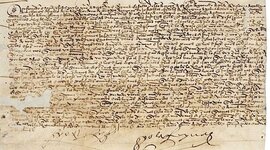sailaway
Hero Member
- Mar 2, 2014
- 623
- 815
- Primary Interest:
- All Treasure Hunting
Those who want to see large mines that were developed by the church and later the Guggenheim family look at the Asarco Corp.Mines
ASARCO » Asarco Mineral Discovery Center
ASARCO/GRUPO MEXICO CHRONOLOGY ? Their Mines, Our Stories
The Mission Mine:
Operations: The Mission Complex, an open-pit mine composed of the Mission, Eisenhower, Pima, Mineral Hill and South San Xavier properties and the nearby North San Xavier mine. The current pit, 2.5 miles long by 1.5 mile wide and 1,200 feet deep, is situated on 20,000 acres. Benches are 40 feet high.
Production Statistics:
Copper in Concentrate:
134.3 million lbs. (2012)
145.5 million lbs. (2011)
Silver Bell Mine:
1850 - Gold and silver exploration leads to discovery of high-grade copper mineralization suitable for direct shipment to the east coast or England.
Operations: The mine operates four open-pits (North Silver Bell, El Tiro, West Oxide and East Oxide). All copper in these pits are extracted from the ore utilizing either of two hydrometallurgical processes: dump leaching or rubblization. Approximately 50% of the ore is mined and hauled to dumps for leaching. The remaining 50% will be rubblized. Rubblization is the process where material is drilled, blasted, and then leached in place. Each month 1,800,000 tons of ore and waste are mined, and 700,000 tons of ore is The The four open-pits and other plant facilities are situated on 19,000 acres. Mining affected areas of the facility total 3,900 acres.
Copper-bearing solutions from the dump leach and rubble areas are collected and pumped to the solvent extraction plant where the copper in solution is concentrated over 30 times before being pumped to the tank house. In the tank house, the copper is recovered from solution using the electrowinning process and plated on stainless steel starter sheets as high-purity cathodes. The current cathode production rate is 67 tons per day. Cathode copper produced in the solvent extraction / electrowinning (SX/EW) operation is sold to producers of copper rod, tubing and wire.
The practices used have got them fined for environmental pollution.
http://www.npr.org/templates/story/story.php?storyId=122779177
ASARCO » Asarco Mineral Discovery Center
ASARCO/GRUPO MEXICO CHRONOLOGY ? Their Mines, Our Stories
The Mission Mine:
Operations: The Mission Complex, an open-pit mine composed of the Mission, Eisenhower, Pima, Mineral Hill and South San Xavier properties and the nearby North San Xavier mine. The current pit, 2.5 miles long by 1.5 mile wide and 1,200 feet deep, is situated on 20,000 acres. Benches are 40 feet high.
Production Statistics:
Copper in Concentrate:
134.3 million lbs. (2012)
145.5 million lbs. (2011)
Silver Bell Mine:
1850 - Gold and silver exploration leads to discovery of high-grade copper mineralization suitable for direct shipment to the east coast or England.
Operations: The mine operates four open-pits (North Silver Bell, El Tiro, West Oxide and East Oxide). All copper in these pits are extracted from the ore utilizing either of two hydrometallurgical processes: dump leaching or rubblization. Approximately 50% of the ore is mined and hauled to dumps for leaching. The remaining 50% will be rubblized. Rubblization is the process where material is drilled, blasted, and then leached in place. Each month 1,800,000 tons of ore and waste are mined, and 700,000 tons of ore is The The four open-pits and other plant facilities are situated on 19,000 acres. Mining affected areas of the facility total 3,900 acres.
Copper-bearing solutions from the dump leach and rubble areas are collected and pumped to the solvent extraction plant where the copper in solution is concentrated over 30 times before being pumped to the tank house. In the tank house, the copper is recovered from solution using the electrowinning process and plated on stainless steel starter sheets as high-purity cathodes. The current cathode production rate is 67 tons per day. Cathode copper produced in the solvent extraction / electrowinning (SX/EW) operation is sold to producers of copper rod, tubing and wire.
The practices used have got them fined for environmental pollution.
http://www.npr.org/templates/story/story.php?storyId=122779177
Last edited:


 ! In trying to decide on a 'reading plan' for this mystery, I decided to start with the etymology. Found this article by Donald Garate with the NPS, wherin he makes some interesting statements which I copy here:
! In trying to decide on a 'reading plan' for this mystery, I decided to start with the etymology. Found this article by Donald Garate with the NPS, wherin he makes some interesting statements which I copy here:
 ,
,




